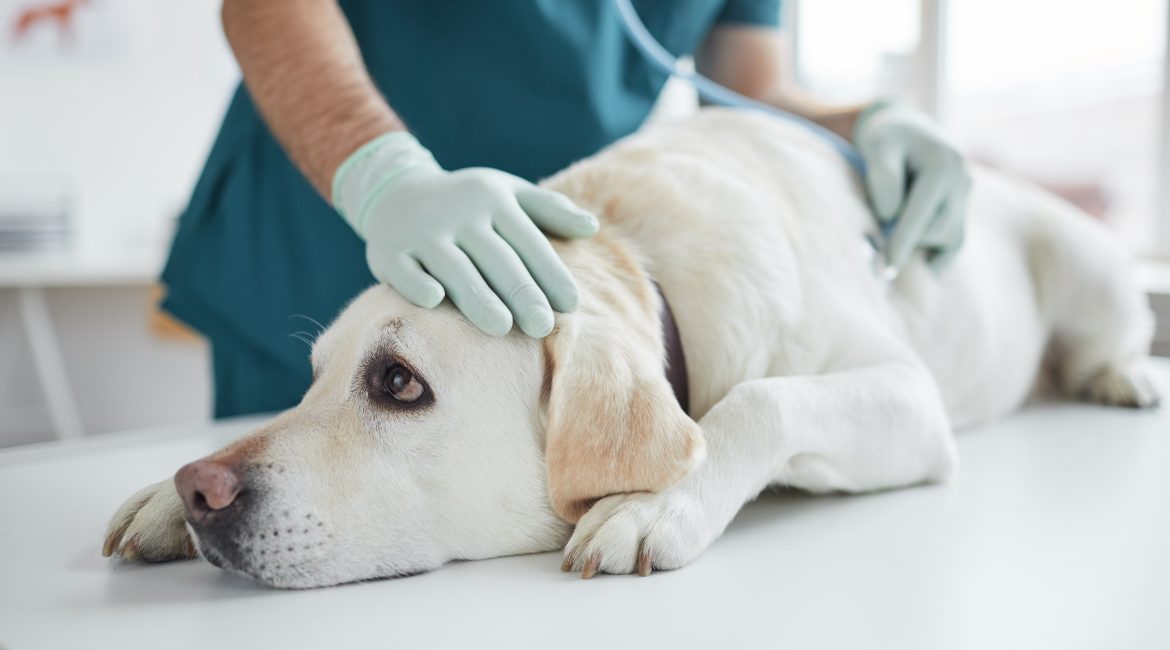You may not have heard of this dangerous little worm; however, every paw parent needs to know about Spirocerca Lupi. Read on and learn exactly what this dreadful worm is and what it could mean for your pooch should they become infected.
You may have heard whispers of this infectious red worm lurking in subtropical regions, including South Africa. The Spirocerca Lupi (S. Lupi) uses hosts to carry their larvae and can be fatal to dogs should they be infected by this worm.
Along with the common parasites, such as ticks and fleas, you will need to learn about Spirocerca and how to identify if your pup has been infected by this dangerous worm. Read on to learn all you need to learn about the Spirocerca Lupi (S. Lupi) worm.
What exactly is Spirocerca Lupi?
First things first, let’s explain exactly what Spirocerca Lupi is. S. Lupi is a red worm that varies in size, ranging from 40mm to 70mm. These pesky worms use hosts to complete their life cycle. S. Lupi uses dung beetles, mice, birds, lizards and frogs as transport hosts and uses dogs as hosts where they live and lay their eggs.
The worms set themselves up in the oesophagus of the dog, which can cause major harm and even to the dog. The term ‘Spirocercosis’ is used to refer to the disease in the dog (the disease caused by being infected by the S. Lupi worm).
Discover: When to take your pet to the vet: 5 warning signs
The Life Cycle of S. Lupi
You will need to learn about the life cycle of this dreadful red worm to understand how your furry friend can become infected. One might have many theories on whether the worm or the egg came first (it’s a bit of a chicken and the egg situation); however, we will begin with the adult worm.
The Spirocerca Lupi worm lives within a dog’s oesophagus, where it creates a nodule. Here, the worm irritates the healthy tissue and causes a release of tissue fluid, which the adult worm feeds on. Once the worm has set up camp and has a supply of tissue fluid to sustain it, the worm will lay eggs through a hole in the nodule. These eggs will pass through the intestines and are passed in the dog’s faeces.
These eggs are then ingested by dung beetles. The larvae do not develop any further nor harm their beetle host, but rather use the beetle as a ‘transport host’ to keep them safe until a dog mistakenly eats the infected beetle.
Once the dog has ingested the beetle, the eggs will move into the dog’s stomach, where they will hatch and start making their way up into the aorta, where they will stay until they have developed into young adults. Thereafter, they will move through the aorta to the oesophagus, where they will settle until they mature, lay eggs and continue the cycle.
Read this: Everything You Need to Know If Your Dog Ate Something Bad
Transport hosts aren’t limited to dung beetles and include animals that eat the dung beetle, such as birds, mice, frogs and lizards. These pesky parasites will not develop in any of these animals and will wait until they are transferred into a dog’s stomach. This means that your four-legged friend is at risk of being infected by S. Lupi should they choose to snack on any of these transport hosts.
Symptoms of Spirocercosis
Luckily, there are some tell-tale signs that your pawfect pup has been infected with this dangerous worm. Due to the nodule that the worm creates in the oesophagus, the below symptoms will develop:
- Vomiting or regurgitating after eating
- Shortness of breath, including panting and coughing
- Increased salivation
- Weight loss
- Fever
- Pale gums
- Weakness
- Swollen feet (the dogs’ legs will swell up just above the feet)
Due to the larvae moving into the aorta after they hatch, the below symptoms can develop:
- Rupture of blood vessels, which can be fatal to a dog
- Secondary bacterial infections
If you notice that your dog is experiencing one or more of the above symptoms, make an appointment with your local vet as soon as possible (and make sure you have pet insurance to help with those pesky vet bills).
Related: Claiming for a Pet Emergency with Oneplan Pet Insurance (3 Easy Steps)
Diagnosis of Spirocercosis
Unfortunately, this disease can be difficult to diagnose and therefore, your veterinarian is likely to undertake several tests to determine if your dog has been infected by S. Lupi. Some of the testing methods include:
- Faecal (stool) samples will be tested for the presence of Lupi eggs
- Chest X-rays will be used to determine if there is a nodule in the oesophagus
- CAT Scan will be used if the X-ray does not pick up the presence of a nodule (provided your vet is convinced your pup is infected with this worm)
- Endoscopy is one of the most successful tools to test for Spirocerca as it is a tube that passes down through the oesophagus and the vet can immediately see if there is a nodule present.
This is a scary parasite for your pup to be infected with; however, you now know exactly what the S. Lupi worm is, how doggies are infected, and how you can spot if your pup has been infected.
Your Pet Insurance Family,
Oneplan




